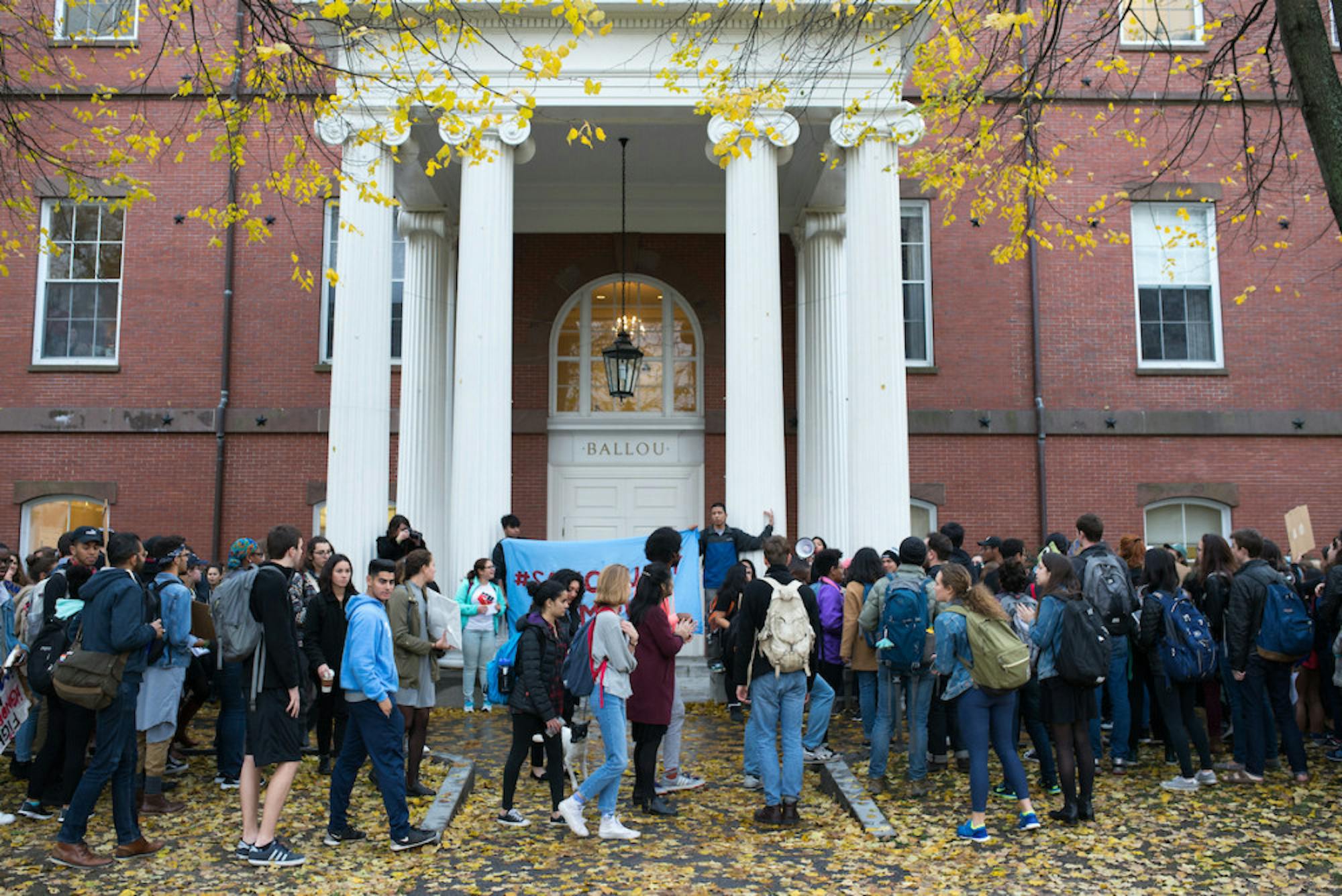For students looking to effect change outside the “Tufts bubble,” the sanctuary movement serves as at least one way in which Tufts students are connecting to a growing movement taking place across the country.
Since Election Day, almost 200 sanctuary campus petitions have emerged nationwide, according to Xavier Maciel, a first-year transfer student at Pomona College.
Maciel has compiled a Google spreadsheet that lists all of these schools, including Tufts, in order to provide an online resource for students across the country petitioning and protesting for sanctuary campus policies.
On Nov. 30, University President Anthony Monaco declared in an email to the Tufts community that the university would remain committed to its efforts to support and protect undocumented students, including those with Deferred Action for Childhood Arrival (DACA) status. The release of this statement marks Tufts as one of dozens of colleges that have made similar declarations.
Provost and Senior Vice President David Harris expressed pride in this fact.
“We are proud to be among a number of colleges and universities that have taken steps to enhance protection for our DACA and undocumented students,” Harris told the Daily in an email.
Maciel, who compiled the spreadsheet just days after the election, included links to any relevant petitions or statements from different universities in the spreadsheet.
“The spreadsheet started off with only three schools on it,” Maciel said. “I thought it was a good idea to consolidate all the petitions into a spreadsheet so that I could share it on Facebook, and maybe my friends in schools on the East Coast would see it.”
Maciel attributed some of the sanctuary campus movement's momentum to the leadership of schools that first declared themselves as sanctuaries.
“At first, people were saying that colleges can’t declare themselves as sanctuary campuses. Then, out of nowhere, the same day, Reed [College] did,” Maciel said.
Wesleyan University was also one of the first colleges to specifically declare itself a sanctuary campus on Nov. 20. Tomás Rogel, a sophomore at Wesleyan and one of the creators of the Wesleyan sanctuary campus petition letter, said he was glad that Wesleyan could be a role model to students at other schools trying to establish a sanctuary campus. However, he noted that steps must still be taken at Wesleyan to effectively support undocumented students.
“Declaring a sanctuary campus [at Wesleyan] is a huge step and a great example for other schools," Rogel said. "But, that’s part of why I’m so wary of what our sanctuary campus means. I want it to be a damn good example.”
Tufts United for Immigrant Justice (UIJ) is the student organization that penned the initial petition for a sanctuary campus at Tufts. According to junior Emma Kahn, a member of UIJ,Tufts followed the example of other schools that had started similar petitions to become sanctuary campuses.
“We took a lot from other sanctuary campus petitions that were out there [when creating our own],” Kahn said.
Maciel also noted that individual campus efforts toward sanctuary status and protection of immigrant rights might be receiving more attention due to the national scale of the movement.
“A lot of schools are learning from each other. [University] presidents are starting to talk about DACA students more than they ever did before,” Maciel said.
But not every school’s sanctuary campus movement has received administrative support to the same degree as those at Reed, Wesleyan and Tufts, all of which have liberal-leaning student bodies.
Since the sanctuary campus movement began, some schools have experienced backlash against their sanctuary campus petitions.
At Wake Forest University in North Carolina, the campus’ conservative news source, the Wake Forest Review, published a petition that countered the sanctuary campus movement signed by “Concerned Members of the Wake Forest Community.” The petition asked Wake Forest University President Nathan Hatch to not adopt “radical sanctuary policies” at Wake Forest.
Richard Cabán Cubero, one of the student authors of the initial petition to make Wake Forest a sanctuary campus, said that the release of the counter-petition created a polarized atmosphere on campus, with some students feeling shocked.
In a response letterto both petitions sent on Dec. 1, Hatch declined to endorse either petition.
“I do not believe adopting the position of either petition will strengthen our community,” he wrote. “While I will not sign either statement, I will do everything in my power as the president of Wake Forest University to support every member of our community in their pursuit of an education.”
Just as the first campuses that adopted sanctuary policy acted as pioneers for future movements, Cabán Cubero, a senior, noted that he and fellow supporters were in a unique – and difficult – position as one of the first campus groups that had to determine the response to a sanctuary campus rejection.
“We looked at other school’s petitions as best practices while creating our own, but there are no best practices for how to handle a rejection,” Cabán Cubero said.
Cabán Cubero and others in Wake Forest’s sanctuary campus movement opted to propose a resolution in favor of a sanctuary campus to the Wake Forest Student Government, which passed on Dec. 6, according to the Wake Forest Review.
Maciel said that backlash against the sanctuary campus movement has also emerged at schools such as New Mexico State University and the University of Mississippi.
As Inauguration Day approaches, sanctuary campus movements are still active nationwide, and updates continue to pop up on Maciel’s spreadsheet.
At Tufts, UIJ is not losing energy. One of the group's more recent goals is to release its own message to complement Monaco’s statement of support for undocumented students, according to Kahn.
“We have already planned research and prep for over winter break,” Kahn said.
But with the end of the semester quickly approaching, Rogel said that students are concerned about how the movement to create sanctuary campuses and provide resources on campus for undocumented students will persevere.
“It feels weird to leave [campus for winter break] and leave this movement behind,” Rogel said.
At Tufts, Kahn said UIJ is concerned about and hopes to address the growing fear surrounding this issue in the coming months.
“I think things for undocumented students are about to get really bad,” she said. “Even if no students are faced with deportation threats and federal funds [for Tufts] aren’t threatened, there will be new and unprecedented experiences of terror.”
National discourse on sanctuary campuses: Where does Tufts fit in?






